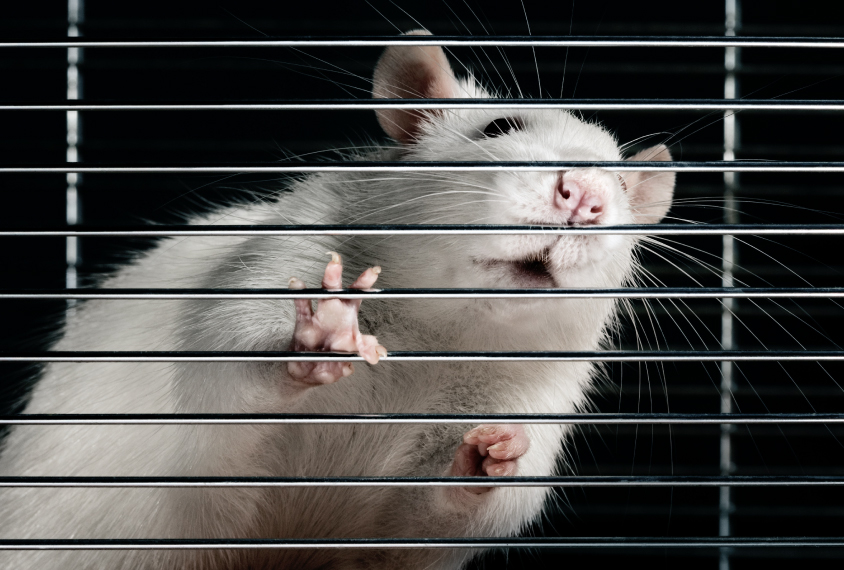
Rats with autism mutation turn deaf ear to playful entreaties
Male rats missing an autism candidate gene called SHANK3 spend less time sniffing, nuzzling and chasing their peers than controls do.
Editor’s Note
This article was originally published 11 May 2017, based on preliminary data presented at the 2017 International Meeting for Autism Research in San Francisco, California. We have updated the article following publication of the study 29 January 2018 in Autism Research1. Updates appear below in brackets.
Male rats missing an autism candidate gene called SHANK3 spend less time sniffing, nuzzling and chasing their peers than controls do. They also show little interest in investigating the playful cries of a fellow rat and vocalize less as pups when separated from their mothers.
Researchers reported the unpublished results today at the 2017 International Meeting for Autism Research in San Francisco, California.
The work uncovers nuanced social features in the rats that would not be apparent in mice, which are far less sophisticated, says lead researcher Jill Silverman, assistant professor of psychiatry and behavioral sciences at the University of California, Davis. Silverman presented the findings at a poster session today.
“The overall message is that rats just have a larger signal,” says Silverman. “Having the bigger signal and more sophisticated behavior lets us find good reproducible models” and may help track the effects of autism treatments, she says.
The rats in the study lack both copies of SHANK3. The gene normally codes for a protein that sits at the connections between neurons and is among the top candidates for autism risk.
Other labs have studied SHANK3 mutant rats in a standard test for social behavior. They have reported that both mutant rats and controls show a preference for another rat over an object. Most mice lacking SHANK3 also show no difference from controls in social behavior.
By contrast, Silverman’s team found that their mutant rats tend not to follow other rats, groom them or sniff their genitals.
Call and response:
The researchers also analyzed the rats’ cries, which are of a frequency inaudible to the human ear. Unlike mice, which do not seem to communicate much with their cries, rats vary their sounds for different purposes.
“They emit two different types of calls: a high-pitched happy, happy, happy whistle and these low-frequency calls when they’re scared,” Silverman says.
The researchers played a recording of either white noise or a high-pitched rat cry from one arm of an eight-arm radial maze. They then assessed the response from a rat in the center of the maze.
Neither mutant nor control rats respond to the recording of white noise. Both groups of rats notice the high-pitched cry and move into the arms of the maze closest to the cry.
However, the mutant male rats quickly lose interest and wander away. By contrast, control mice spend the next five minutes investigating the arms, presumably looking for a playmate.
The researchers did not see the same effect in the female mutant mice. This may be because they had fewer females and so could not detect statistically significant differences, says Silverman. The team will need to study more animals to say whether this is an actual difference between the sexes, she says.
[Brain imaging revealed lower volume in the posterior striatum, globus pallidus, nucleus accumbens and hypothalamus of the mutant rats compared with controls. All of these areas are associated with social reward. These trends, however, were not significant.]
The mutant and controls rats both seem to respond to the playful cries with calls of their own. The researchers plan to look at these responses for any differences between the mutants and controls.
For more reports from the 2017 International Meeting for Autism Research, please click here.
References:
- Berg E.L. et al. Autism Res. Epub ahead of print (2018) PubMed
Recommended reading

Autism traits, mental health conditions interact in sex-dependent ways in early development

New tool may help untangle downstream effects of autism-linked genes

NIH neurodevelopmental assessment system now available as iPad app
Explore more from The Transmitter

Five things to know if your federal grant is terminated
It’s time to examine neural coding from the message’s point of view
